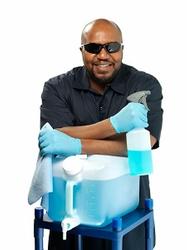
What we need to know about Z87 safety glasses
Some protective eyewear now available for cleaning professionals-as well as those in construction, manufacturing, warehousing, and other industries-are known as “Z87 safety glasses.”
Z87 refers to ANSI Z87.1-2010 certification, which is a certification found on some protective eyewear.
This is an important certification to look for, according to Vicky Adams, Category Manager – Gloves and Safety for Impact Products, manufacturers of protective eyewear and other safety-related products for professional use.
And workers in some work environments are now required to select only eyewear that are marked ANSI Z87.1-2010 certified. This protective eyewear will have a “Z87” marked on the eyewear itself.
“This certification and marking means the [protective] eyewear has been tested and proven to minimize if not prevent eye injuries as a result of such things as impact (airborne objects that could hit the eye), radiation, chemical splash, or welding.”
Adams encourages cleaning professionals to look for Z87 certification when selecting protective eyewear because it also ensures that the glasses have been tested to protect the eye from a variety of different hazards that might be encountered on the job.
“Many eye injuries affecting custodial workers occur as a result of chemical splashes, spills, and drops getting into the eye,” she says. “Another big problem is airborne dust and grit lodging in the eye. Both can have serious repercussions, even a loss of eyesight.”
More specifically, Z87 safety glasses must pass tests that demonstrate protection from the following:
* Basic and high-velocity impact to both lenses and frames
* Non-ionizing radiation*
* Exposure to specific chemicals
Z87 safety glasses must also show durability to flammables and corrosion.
“The goal here is to allow the wearer to focus on their work and not worry about their eyes,” explains Adams.
She adds that some Z87 safety glasses have a comfortable fit and are attractive. “If [the safety glasses] are comfortable and look good, the worker will likely wear them, helping to ensure their eyes are protected.”









